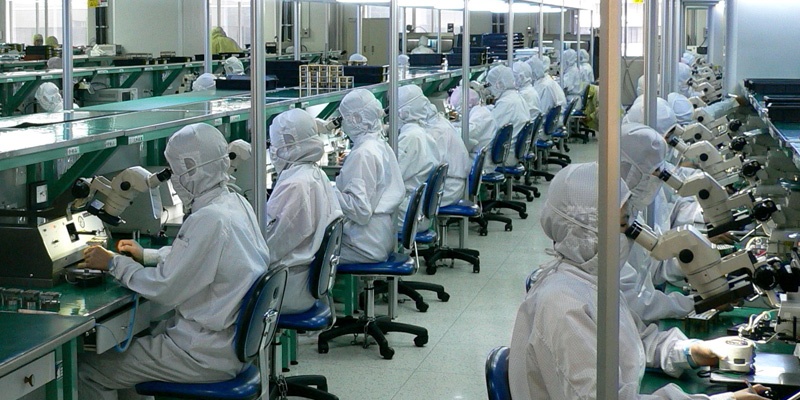Cleanroom Operations
Cleanroom operations are critical in various industries, especially in pharmaceuticals, biotechnology, and semiconductor manufacturing. These controlled environments are designed to minimize contamination and ensure the quality and safety of products. The following sections outline the key aspects of cleanroom operations.

CleanRoom Classification
Cleanrooms are classified based on their cleanliness levels, defined by ISO 14644-1. The standard categorizes cleanrooms into classes, from ISO1 (the cleanest, with fewer than 10 particles per cubic meter) to ISO9 (up to 35,200 particles per cubic meter). This classification determines the design, construction, and operational protocols necessary for each cleanroom.
Air Quality Control
Maintaining air quality is essential in cleanroom operations. ISO 14644-3 specifies the monitoring of airborne particles and microbial contamination. For instance, in an ISO5 cleanroom, the maximum allowable limit for viable microorganisms is 3 CFU (colony-forming units) per cubic meter. Regular monitoring ensures compliance and helps identify potential contamination sources.

Filtration Systems
Effective air filtration is crucial for cleanroom operations. HEPA (High-Efficiency Particulate Air) filters, which capture 99.97% of particles as small as 0.3 microns, are commonly used. The installation of these filters is guided by ISO 14644-4, which outlines testing methods for filter efficiency and integrity. Proper maintenance and replacement schedules are vital to ensure optimal performance.
Cleaning and Disinfection
Cleaning procedures in cleanrooms must adhere to defined protocols to ensure effective contamination control. The frequency of cleaning depends on the cleanroom classification, with higher-class rooms requiring more frequent cleaning. iso 14644-7 recommends cleaning schedules that may range from daily to hourly, depending on operational activities. The use of validated cleaning agents is essential to ensure the removal of biological and particulate contaminants.

Validation and Documentation
Validation of cleanroom operations is crucial for regulatory compliance. iso 14644-1 outlines the need for proper documentation of cleanroom classification and monitoring results. Validation protocols should include installation qualification (IQ), operational qualification (OQ), and performance qualification (PQ). Maintaining comprehensive records ensures that operations meet regulatory standards and facilitates audits by governing bodies.
Relevant Standards and Guidelines
ISO 14644-1: Classification of air cleanliness.
iso 14644-2: Monitoring of airborne particles.
ISO 14644-3: Testing methods.
iso 14644-4: Design, construction, and performance.
iso 14644-5: Operation and use.
ISO 14644-6: Vocabulary.
ISO 14644-7: Cleaning and disinfecting.
ISO 13485: Quality management systems for medical devices.
What Are the Four Basic Components of a Cleanroom?

1. Air Filtration System:A cleanroom's air filtration system is crucial for maintaining cleanliness. High-Efficiency Particulate Air (HEPA) or Ultra-Low Penetration Air (ULPA) filters are used to remove airborne particles. These filters must be maintained regularly to ensure optimal performance.
2. Temperature and Humidity Control:Maintaining specific temperature and humidity levels is essential for cleanroom operations. Typically, temperature is controlled between 20-24°C, while humidity is kept between 30-60%. This environment helps prevent static electricity and ensures product stability.

3. Cleanroom Garments:Personnel in cleanrooms must wear specialized garments to minimize contamination risks. These garments, including gowns, gloves, and masks, are designed to trap particles and prevent shedding. Proper gowning procedures are critical for maintaining cleanroom integrity.
4. Monitoring and Control Systems:Effective monitoring and control systems track air quality, particulate levels, and environmental conditions. Continuous monitoring ensures compliance with cleanroom standards, enabling immediate corrective actions when contamination thresholds are exceeded.
The Principle of Cleanroom

Contamination Control
The primary principle of a cleanroom is to control contamination. This includes minimizing airborne particles, microbial contamination, and other contaminants that can compromise product quality. Stringent protocols are established to maintain a controlled environment.
Positive Pressure
Cleanrooms typically operate under positive pressure to prevent outside contaminants from entering. This means that the air pressure inside the cleanroom is higher than that outside, ensuring that air flows out of the cleanroom when doors are opened.
Airflow Management
Proper airflow management is essential in cleanrooms. Laminar airflow systems are utilized to create a uniform distribution of filtered air. This technique helps to direct airborne particles away from critical areas, maintaining cleanliness.
The Process of Cleanroom

Design and Construction
The process of establishing a cleanroom begins with careful design and construction. It involves selecting appropriate materials, implementing effective air filtration systems, and ensuring that the layout supports optimal airflow and accessibility.
Validation
Once constructed, the cleanroom must undergo validation to confirm that it meets cleanliness standards. This includes testing air quality, particle counts, and verifying that all systems function as intended.
Operation and Maintenance
Once operational, a cleanroom requires regular maintenance and monitoring. This includes routine cleaning, filter changes, and environmental monitoring to ensure compliance with cleanliness standards. Proactive maintenance helps prevent contamination and equipment failures.
What is Clean Room in GMP?

1. Compliance with Standards
Cleanrooms in GMP settings must comply with strict regulatory standards. These include ISO classifications and guidelines from regulatory agencies like the FDA. Compliance ensures that products meet safety and quality requirements for market entry.
2. Role in Product Quality
The cleanroom plays a vital role in maintaining product quality. By controlling environmental factors, such as air quality and particulate levels, cleanrooms help prevent contamination that could impact the safety and effectiveness of manufactured products.
3. Documentation and Record Keeping
Documentation is a fundamental aspect of GMP cleanroom operations. All processes, including validation, monitoring, and maintenance activities, must be thoroughly recorded. This ensures traceability and accountability, which are critical during audits and inspections.
 +86 18186671616
+86 18186671616 Jason@cleanroomequips.com
Jason@cleanroomequips.com
 MENU
MENU














